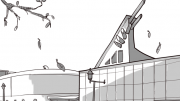The Canadian government has issued a research grant of $2.7 million to help fund an archeological dig in Israel. During the month of August eight University of Manitoba students are participating in the dig, which is focusing on artifacts from the Early Bronze Age.
The archeological site is located by Tell es-Safi, which is close to the main highway that connects Tel Aviv to Jerusalem.
The Early Bronze Age artifacts have been dated as far back as 3000 to 2500 BCE. Some of the artifacts that have been discovered so far include pottery, drinking vessels, and serving trays. As well, walls of houses, walkways, and courtyards have also been unearthed throughout the excavation.
Along with the eight students from the University of Manitoba, there are students from all over the world, including: Israel, United States, China, among others.
According to professor Greenfield, who is an anthropology professor at the University of Manitoba, this dig will help us to understand the origins of the urban lifestyle.
“Most Canadians today don’t live in towns and villages and the countryside, they live in massive urban centres. This has its origins here in the Middle East and getting at a site like Tell es-Safi gives us an opportunity to try to understand that kind of lifestyle.”
Another discovery from the dig site that has been of some interest is early kitchen. It seems that the kitchen was a central room in the early household, as it still is today. In many of the rooms’ hearths have been discovered which are assumed to have been used for either cooking or for warming the room.
Additionally, there has been some evidence of renovations to some of the houses and what appears to be remodeling of existing houses. This suggests, according to Greenfield, that the people of the Early Bronze Age were a do-it-yourself people. According to Greenfield, studying these ancient cities is an important way to understand how our culture today, as well as other different cultures around the world, have evolved.
Greenfield states, “It’s really important to look at our behavior in Canada and see where it comes from, otherwise we can’t understand who we are, why we’re different, why the lifestyle we live is very special and why we need to protect it.”
One of the students participating in the archeological dig, Jeremy Beller, says that for him this is an opportunity of a lifetime.
The research grant, which was given by the Canadian Social Science and Humanities Research Council, will enable Canadian students to continue their excavation and research for the next seven years. The grant money is also being used to finance technical equipment to assist in the research. Computers and scanners have also been purchased to help map out the future of the archeological dig.



